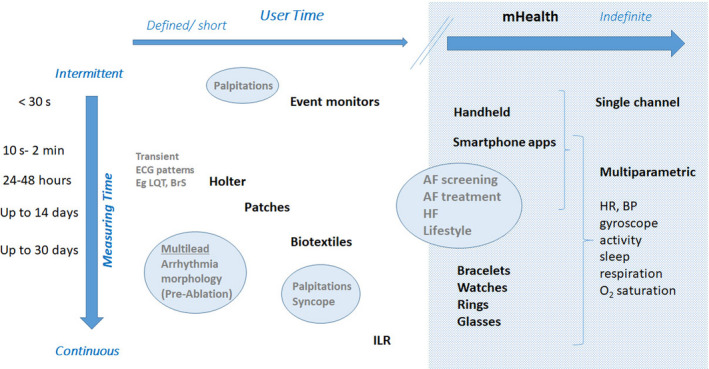Figure 2.

mHealth devices for arrhythmia monitoring according to indications. Traditional wearable monitors are used for defined, short periods of time. Advantages are continuous monitoring and ability to use multiple leads that may be important for arrhythmia differentiation. These have been used historically for evaluation of palpitations, syncope, and defining QRS morphology. mHealth extends monitoring time indefinitely, to be defined by the user, and to the possibility of monitoring other parameters simultaneously with the ECG and linking to machine learning. Typically, mHealth utilizes single‐channel ECG or derived heart rate, and discontinuous monitoring. AF—atrial fibrillation, BP—blood pressure, BrS—Brugada syndrome, HF—heart failure, HR—heart rate, ILR—implantable loop recorder, LQT—long QT.
